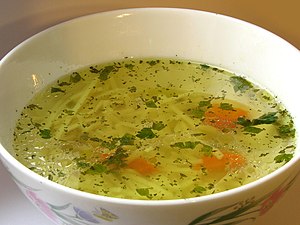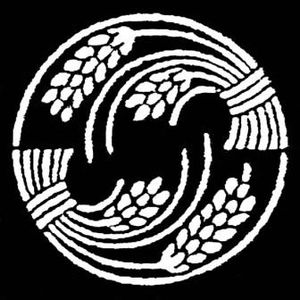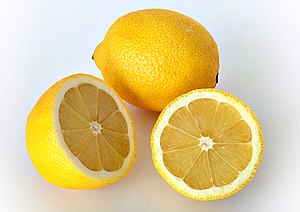Doctors at three health centers in Massachusetts have begun advising patients to eat “prescription produce” from local farmers’ markets, in an effort to fight obesity in children of low-income families. Now they will give coupons amounting to $1 a day for each member of a patient’s family to promote healthy meals.
“A lot of these kids have a very limited range of fruits and vegetables that are acceptable and familiar to them. Potentially, they will try more,” said Dr. Suki Tepperberg, a family physician at CenterCodman Square Health Center in Dorchester, one of the program sites. “The goal is to get them to increase their consumption of fruit and vegetables by one serving a day.”The effort may also help farmers’ markets compete with fast-food restaurants selling dollar value meals. Farmers’ markets do more than $1 billion in annual sales in the United States, according to the Agriculture Department.
Massachusetts was one of the first states to promote these markets as hubs of preventive health. In the 1980s, for example, the state began issuing coupons for farmers’ markets to low-income women who were pregnant orbreast-feeding or for young children at risk for malnourishment. Thirty-six states now have such farmers’ market nutrition programs aimed at women and young children.
Thomas M. Menino, the mayor of Boston, said he believed the new children’s program, in which doctors write vegetable “prescriptions” to be filled at farmers’ markets, was the first of its kind. Doctors will track participants to determine how the program affects their eating patterns and to monitor health indicators like weight and body mass index, he said.
“When I go to work in the morning, I see kids standing at the bus stop eating chips and drinking a soda,” Mr. Menino said in a phone interview earlier this week. “I hope this will help them change their eating habits and lead to a healthier lifestyle.”
The mayor’s attention to healthy eating dates to his days as a city councilman. Most recently he has appointed a well-known chef as a food policy director to promote local foods in public schools and to foster market gardens in the city.
Although obesity is a complex problem unlikely to be solved just by eating more vegetables, supporters of the veggie voucher program hope that physician intervention will spur young people to adopt the kind of behavioral changes that can help forestall lifelong obesity.
Childhood obesity in the United States costs $14.1 billion annually in direct health expenses like prescription drugs and visits to doctors and emergency rooms, according to a recent article on the economics of childhood obesity published in the journal Health Affairs. Treating obesity-related illness in adults costs an estimated $147 billion annually, the article said.
Although the vegetable prescription pilot project is small, its supporters see it as a model for encouraging obese children and their families to increase the volume and variety of fresh produce they eat.
“Can we help people in low-income areas, who shop in the center of supermarkets for low-cost empty-calorie food, to shop at farmers’ markets by making fruit and vegetables more affordable?” said Gus Schumacher, the chairman of Wholesome Wave, a nonprofit group in Bridgeport, Conn., that supports family farmers and community access to locally grown produce.
If the pilot project is successful, Mr. Schumacher said, “farmers’ markets would become like a fruit and vegetable pharmacy for at-risk families.”
The pilot project plans to enroll up to 50 families of four at three health centers in Massachusetts that already have specialized children’s programs called healthy weight clinics.
A foundation called CAVU, for Ceiling and Visibility Unlimited, sponsors the clinics that are administering the veggie project. The Massachusetts Department of Agriculture and Wholesome Wave each contributed $10,000 in seed money. (Another arm of the program, at several health centers in Maine, is giving fresh produce vouchers to pregnant mothers.) The program is to run until the end of the farmers’ market season in late fall.
One month after Leslie-Ann Ogiste, a certified nursing assistant in Boston, and her 9-year-old son, Makael Constance, received their first vegetable prescription vouchers at the Codman Center, they have lost a combined four pounds, she said. A staff member at the center told Ms. Ogiste about a farmers’ market that is five minutes from her apartment, she said.
“It worked wonders,” said Ms. Ogiste, who bought and prepared eggplant, cucumbers, tomatoes, summer squash, corn, bok choy, parsley, carrots and red onions. “Just the variety, it did help.”
Ms. Ogiste said she had minced some vegetables and used them in soup, pasta sauce and rice dishes — the better to disguise the new good-for-you foods that she served her son.
Makael said he did not mind. “It’s really good,” he said.
Some nutrition researchers said that the Massachusetts project had a good chance of improving eating habits in the short term. But, they added, a vegetable prescription program in isolation may not have a long-term influence on reducing obesity. Families may revert to their former habits in the winter when the farmers’ markets are closed, these researchers said, or they may not be able to afford fresh produce after the voucher program ends.
Dr. Shikha Anand, the medical director of CAVU’s healthy weight initiative, said the group hoped to make the veggie prescription project a year-round program through partnerships with grocery stores.
But people tend to overeat junk food in higher proportion than they undereat vegetables, said Dr. Deborah A. Cohen, a senior natural scientist at the RAND Corporation. So, unless people curtail excessive consumption of salty and sugary snacks, she said, behavioral changes like eating more fruit and vegetables will have limited effect on obesity.
In a recent study led by Dr. Cohen, for example, people in southern Louisiana typically exceeded guidelines for eating salty and sugary foods by 120 percent in the course of a day while falling short of vegetable and fruit consumption by 20 percent.The weight clinics in Massachusetts chosen for the vegetable prescription test project already encourage families to cut down on unhealthy snacks.
Even as Ms. Ogiste and her son started shopping at the farmers’ market and eating more fresh produce, for example, they also cut back on junk food, she said.
“We have stopped the snacks. We are drinking more water and less soda and less juice too,” Ms. Ogiste said. “All of that helped.”
 Image via Wikipedia
Image via Wikipedia


 ideal for warm summers, as it is rather Yin. I give it a Yin -4 on my Yin Yang food scale. If you do not want to use
ideal for warm summers, as it is rather Yin. I give it a Yin -4 on my Yin Yang food scale. If you do not want to use 

















 Here is the cycle of Creation:
Here is the cycle of Creation:













